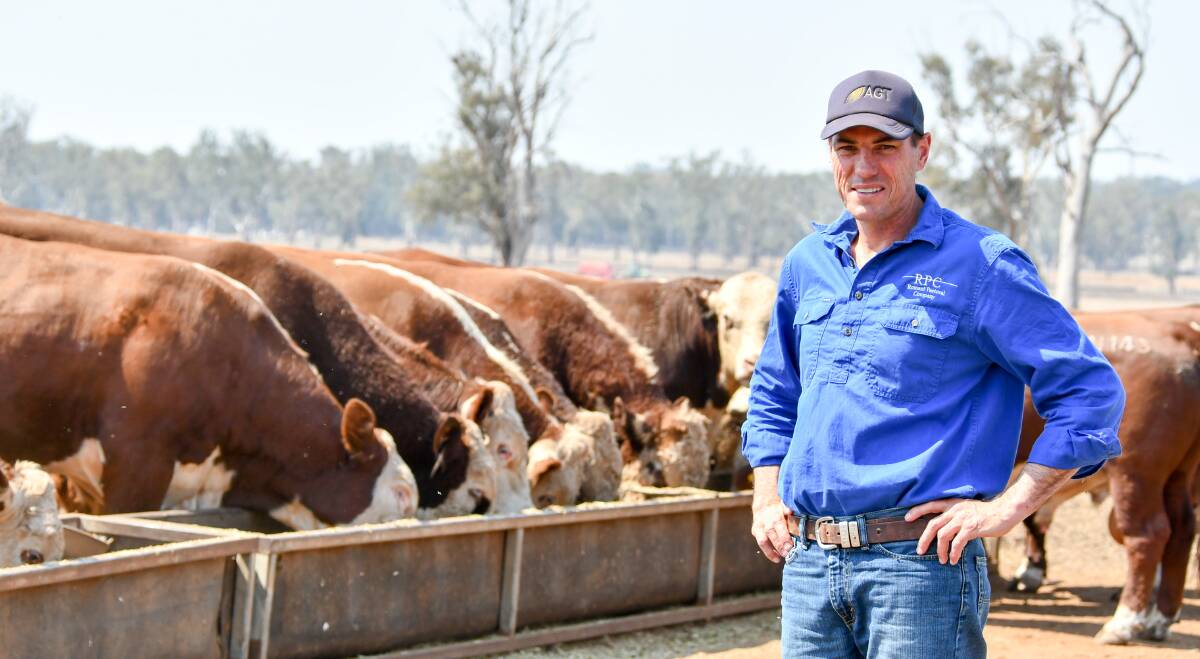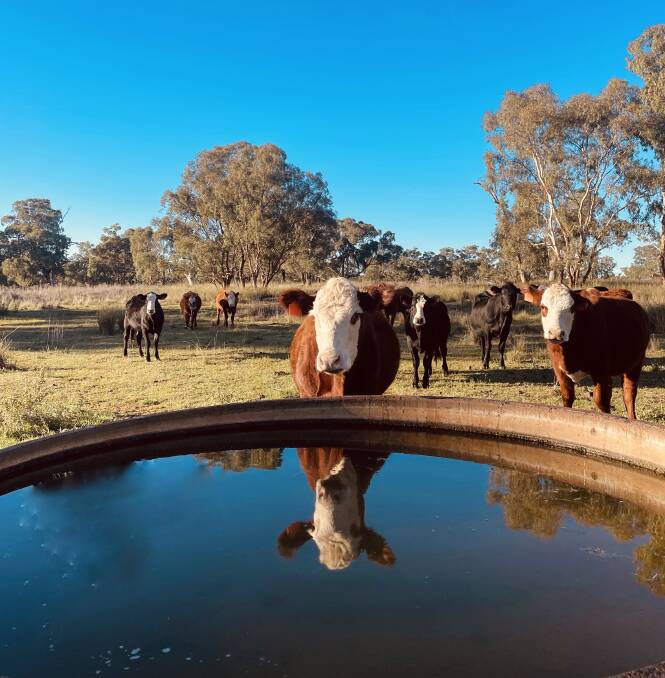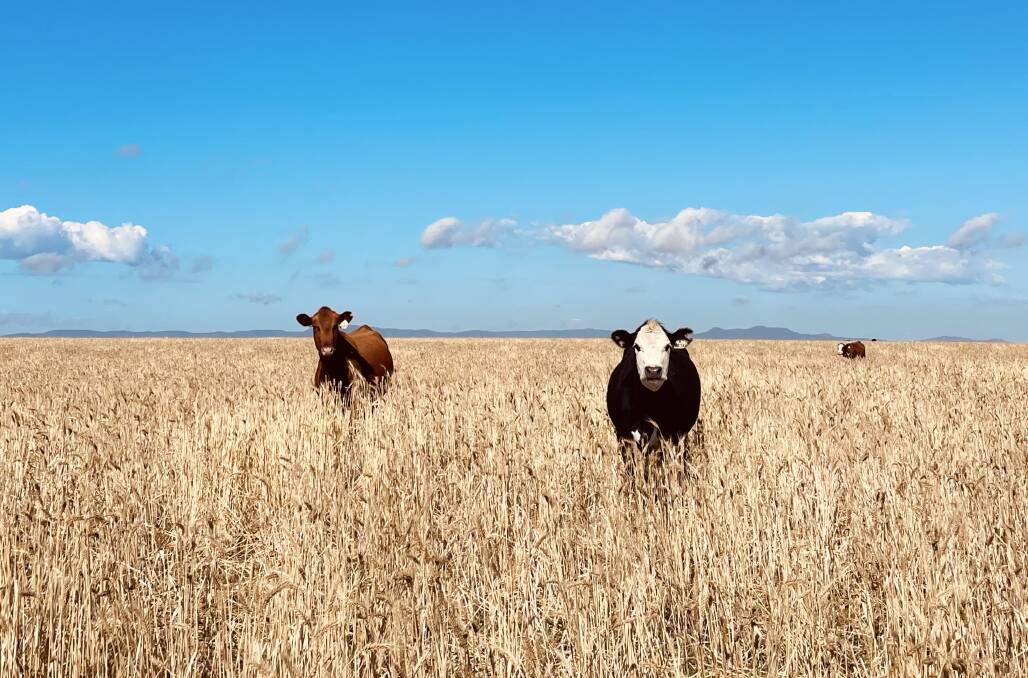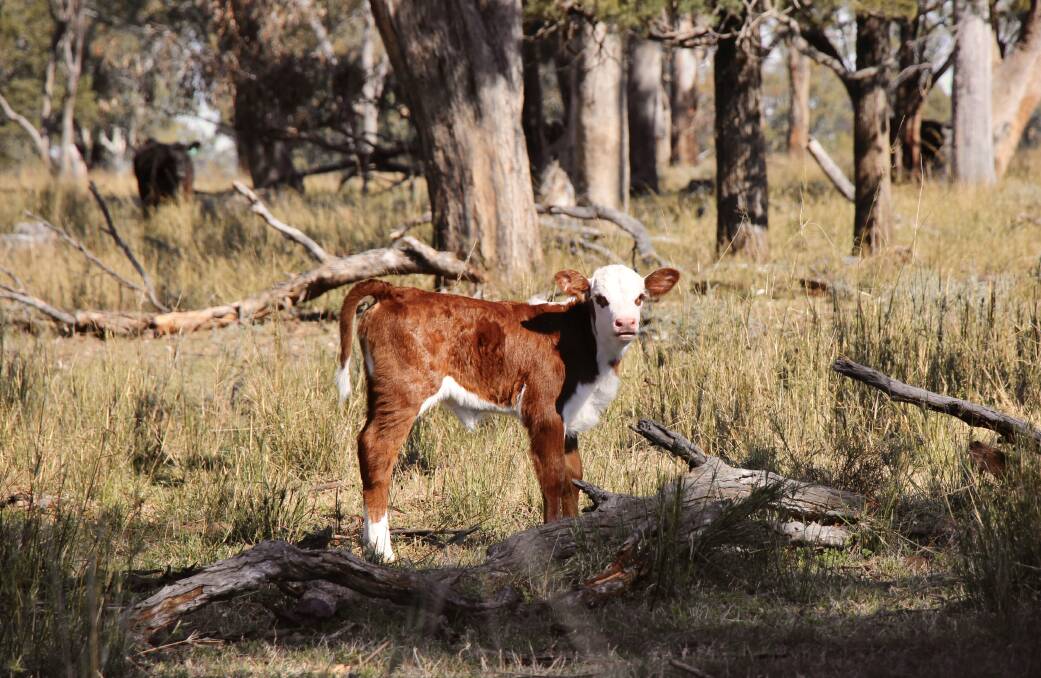Herefords are a triple threat at Windy Station

This is branded content for Herefords Australia.
Planning, productivity and performance are the triple drivers of a crossbreeding system using Hereford genetics on northern NSW's Windy Station.
Windy Station is a jewel in the crown of the family-owned Romani Pastoral Company, and covers 24,500 hectares of cropping and grazing country at Quirindi.
Windy's self-replacing beef herd of 70,000 DSE or 3000 breeding females is run on soils ranging from light sands to self-mulching black clays and basalt hills in a 620-millimetre average rainfall zone.
Hereford and Angus bulls are used over the primarily Angus female base to produce around 1500 steers a year for finishing to 500kg liveweight for mid-fed 150-day programs.
General manager David Lee arrived on Windy Station six years ago and set about putting plans in place to push productivity to an optimum.
A target includes pasture renovation to increase stocking rates to an optimum of 100,000 DSE or 4500 breeding females.
An economic decision was made to close an on-farm feedlot and move to using the station's grazing cereal crops to finish cattle as a preferred supplier to regional feedlots.
"We join Angus bulls over first and second calvers, and a Hereford bull over the balance of the age groups," Mr Lee said.
"Within the herd we are 50 per cent Angus and 50pc Hereford genetics."
Windy Station has a profitability benchmark for the cropping and beef enterprises of a minimum of 4pc return on assets set as a benchmark.

This is achieved through a focus on increasing bull longevity and weight for age while reducing the cost of production per kilogram of beef produced.
Windy Station has derived a genetic selection criteria for bulls to drive the fertility and performance targets to deliver profitability in the paddock.
"Benchmarking data drives our decision making to a large degree to achieve that target," he said.
"We have an efficient, productive herd so we rely on benchmarking data to tell us if we are heading in the right direction."
He said the key profit drivers within the Windy Station herd were labour efficiency, costs of production, and kilograms of beef per DSE.
"Bull longevity is part of the story around the benefits of the Black Baldy system," he said.

"The working life of the Hereford bulls on average are double the Angus bulls (four years compared to two), and that is a key part of cost of production."
Bulls are screened annually for structural soundness and their Breedplan estimated breeding value (EBVs) data sets analysed.
"Our bull battery is selected on EBVs for moderate birthweight, above average calving ease, 400-day and 600-day weight, moderate mature cow weight, and above average eye muscle area (EMA), scrotal circumference and intramuscular fat (IMF)," he said.
"We join the bulls at 2pc which is not industry average, and that helps to reduce the cost per calf.
"All females are naturally joined and there is no AI.
"The benefits of heterosis and reduced bull costs are the two big ones in our herd.
"There is additional weight for age in the Black Baldy weaners and maternal heterosis benefits from a crossbreeding female.

"The focus on genetic information and performance data delivers profitability in the paddock via high fertility, live calves on the ground, high growth in the weaners, positive fat for energy reserves for both females and steers, and intramuscular fat to ensure eating quality."
The herd calves from September 1 to take advantage of the spring and summer dominant native, improved and tropical pastures.
Heifers are joined over four weeks at a critical mating weight of 300kg at 14 months.
The heifers are pregnancy tested in February and calve as two-year-olds.
"Our ultimate aim is to compress joining to three weeks to increase labour efficiency," he said.
"Depending on the season, we keep the surplus heifers and finish them on grazing crops to reach slaughter weight within nine months."
Calves are yard weaned onto hay over 10 days at five to six months of age to allow the cow to recover her body condition score before winter.
The weaners are grazed on tropical grasses followed by winter cereal crops to achieve an average daily gain that allows steers to be sold at target weights and heifers to reach critical mating weight.
This is branded content for Herefords Australia.


